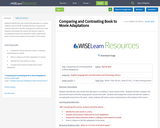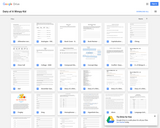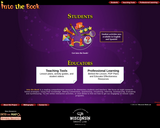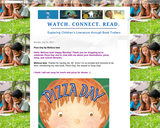
This is a two-sided resource for students to use when responding to reading.
- Subject:
- English Language Arts
- Material Type:
- Formative Assessment
- Learning Task
- Reference Material
- Provider:
- unknown
- Date Added:
- 04/05/2017

This is a two-sided resource for students to use when responding to reading.

Students identify the main events that take place in a classic children's picture book. Students will then compare and contrast the book to the film using specific events from both. Students will analyze the choices the director makes in recreating the events from the book. Lastly, students will write a movie review based on the analysis of the events.

The video models a 6th-grade teacher, Viet-ly Nguyen, using student talk to analyze and interpret characters' actions in a selection from One Crazy Summer by Rita Williams-Garcia. During the student talk, the teacher adds criteria to the discussion to guide students as a participation protocol.
Lower VoiceUse evidence & Examples
The teacher's process is interspersed throughout the video, explaining her purpose behind each of the steps.

This is a breakdown of the novel "Diary of a Wimpy Kid" and is set up to move slow. It is set up so that students are able to recall events within each reading as they are directly taken from the book. This could be printed off for students to fill out or could be up loaded to google classroom for students to fill in.

In this module, students are involved in a deep study of mythology, its purposes, and elements. Students will read Rick Riordan’s The Lightning Thief (780L), a high-interest novel about a sixth-grade boy on a hero’s journey. Some students may be familiar with this popular fantasy book; in this module, students will read with a focus on the archetypal journey and close reading of the many mythical allusions. As they begin the novel, students also will read a complex informational text that explains the archetypal storyline of the hero’s journey which has been repeated in literature throughout the centuries. Through the close reading of literary and informational texts, students will learn multiple strategies for acquiring and using academic vocabulary. Students will also build routines and expectations of discussion as they work in small groups. At the end of Unit 1, having read half of the novel, students will explain, with text-based evidence, how Percy is an archetypal hero. In Unit 2, students will continue reading The Lightning Thief (more independently): in class, they will focus on the novel’s many allusions to classic myths; those allusions will serve as an entry point into a deeper study of Greek mythology. They also will continue to build their informational reading skills through the close reading of texts about the close reading of texts about the elements of myths. This will create a conceptual framework to support students’ reading of mythology. As a whole class, students will closely read several complex Greek myths. They then will work in small groups to build expertise on one of those myths. In Unit 3, students shift their focus to narrative writing skills. This series of writing lessons will scaffold students to their final performance task in which they will apply their knowledge about the hero’s journey and the elements of mythology to create their own hero’s journey stories.
Find the rest of the EngageNY ELA resources at https://archive.org/details/engageny-ela-archive .

This resource allows students to record and track their data for multiple formative and summative assessments related to inferencing.

Into the Book is a reading comprehension multimedia resource. Students learn to use reading comprehension strategies including: prior knowledge, making connections, questioning, visualizing, inferring, summarizing, evaluating and synthesizing. This resource includes educational videos, online activities, professional learning videos and teacher tools. Discover more at reading.ecb.org.

John Schumacher (aka Mr. Schu) is a blogger, a part-time lecturer at Rutgers University, and the Ambassador of School Libraries for Scholastic Book Fairs®. You could say every day is a giant book party for this teacher-librarian! In fact, Library Journal named him "The Xtreme Librarian" for the high level of exertion – along with some gears and stunts – he uses to get kids reading, and Instructor Magazinenamed him a Cool Teacher for redefining what it means to be a teacher-librarian.
This resource is a link to his Blog. The Blog hosts children's book trailers he has created. He explains "how" he created them.

After reading Water Hole Waiting by Jane Kurtz and Christopher Kurtz, or another book that has a well-developed setting, students work as a class to chart the use of the three elements of setting in the story, using specific words and examples from the text. Students then discuss the techniques that the book’s author used to develop the setting, making observations and drawing conclusions about how authors make the setting they write about vivid and believable. Next, students work in small groups to analyze the setting in another picture book, using an online graphic organizer. Finally, students apply what they have learned about how authors develop good settings to a piece of their own writing.